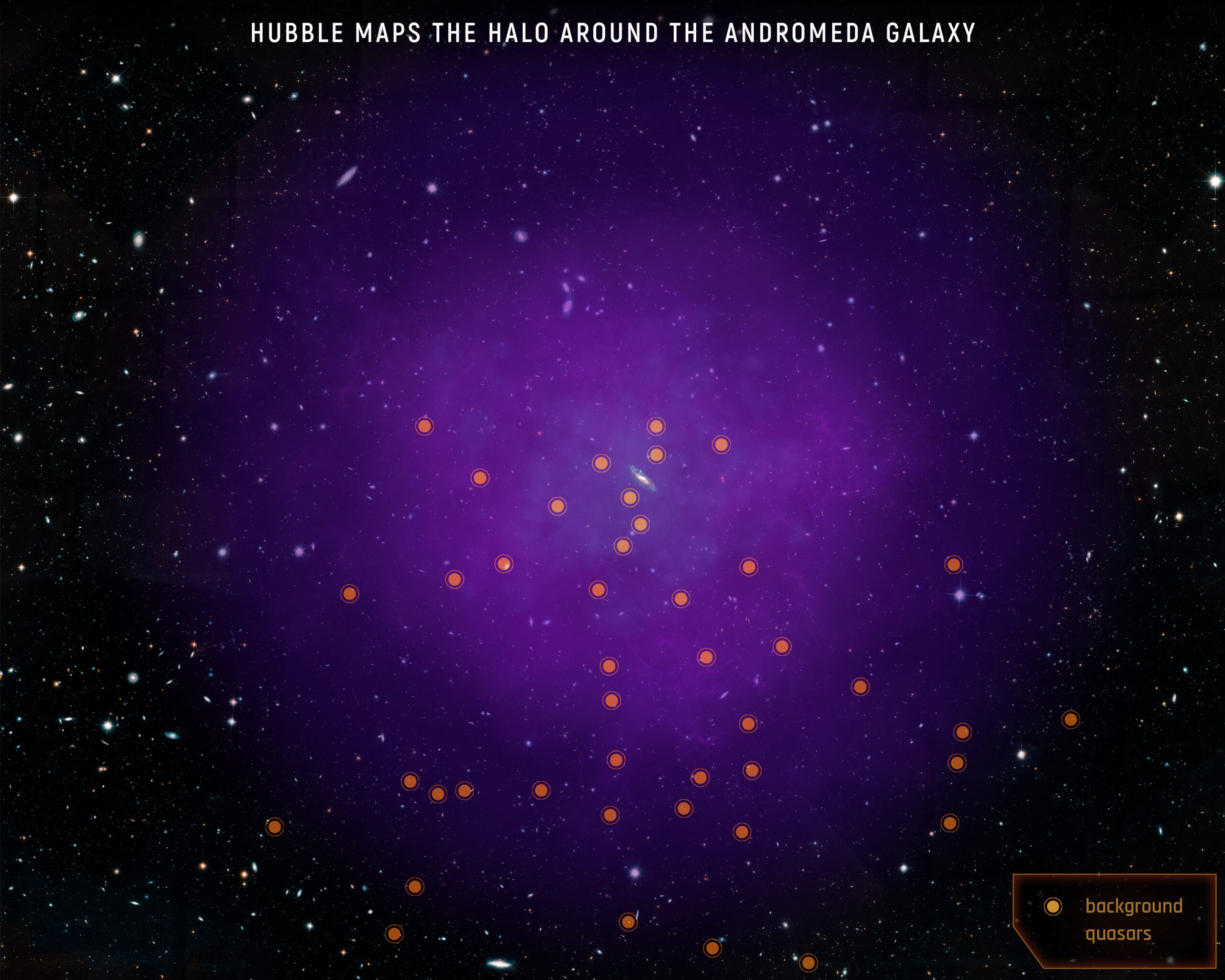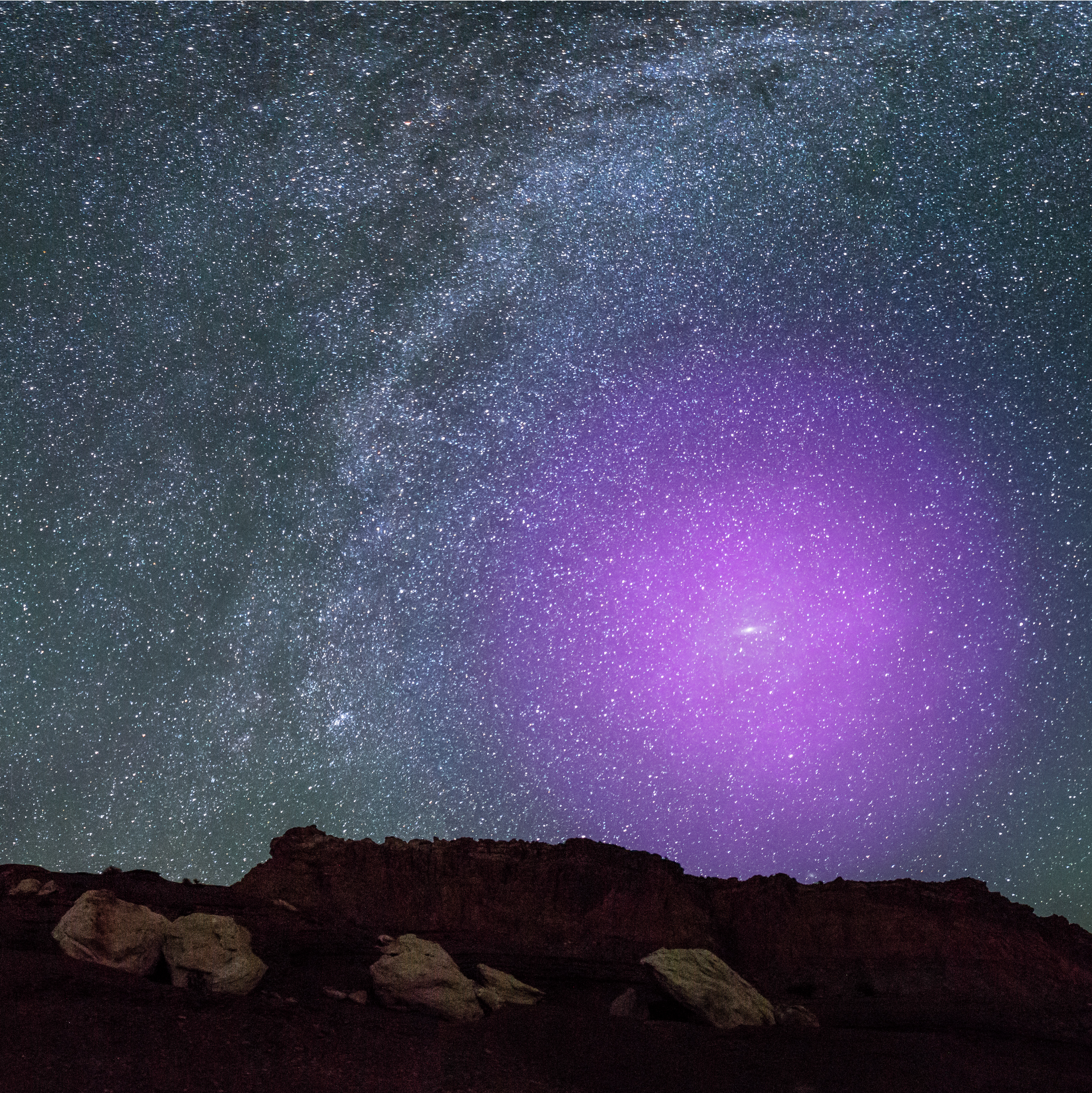Milky Way vs. Andromeda: the collision has already begun
It’s inevitable that the Milky Way and the Andromeda Galaxy will one day collide and merge, even though right now there’s still 2.5 million light-years between them. Thus, the light that we see from Andromeda today was emitted from there 2.5 million years ago. The two most massive members of the Local Group are approaching each other at 120 kilometers per second. In three to four billion years (so while our Sun is still alive), up to 1.3 billion stars of the two galaxies will encounter each other. After another maybe three billion years, the merger will produce a gigantic elliptical galaxy, which could be called “Milkomeda” perhaps.
The merger, however, already began a long time ago, as researchers discovered using the Hubble space telescope. In an article published in the Astrophysical Journal, they describe how they studied the area around the actual galaxy, the so-called halo, through a program called AMIGA (Absorption Map of Ionized Gas in Andromeda). To do this, they examined light from 43 quasars – the extremely distant, bright nuclei of active galaxies powered by black holes – located far beyond Andromeda. The quasars are positioned behind different areas of the halo, so the researchers could study several different regions. By focusing on the light from the quasars through the halo, the team could observe how this light interacted with and was absorbed by the Andromeda halo and how this absorption changed in different regions. The immense Andromeda halo apparently consists of thin, ionized gas that does not emit any easily detectable radiation. Therefore, tracing the absorption of light coming from a background source is a better way to study these regions.
The researchers were surprised to discover that this almost invisible halo made of diffuse plasma extends 1.3 million light-years out from the Andromeda Galaxy – almost half the distance to our Milky Way – and in some directions up to 2 million light-years. This means that Andromeda’s halo is already encountering our own galaxy’s halo.
The researchers also discovered that the halo has a layered structure with two nested gas shells. “We found that the inner shell, which extends to about a half million light-years, is far more complex and dynamic,” explains study leader Nicolas Lehner of the University of Notre Dame in Indiana. “The outer shell is smoother and hotter. This difference is a likely result from the impact of supernova activity in the galaxy’s disk more directly affecting the inner halo.” An indication of this activity is the discovery of a large amount of heavy elements in the gaseous halo. They are born in the interiors of stars and then ejected into space – sometimes violently when a star dies. The halo is then contaminated with this material from stellar explosions.
“Understanding the giant gas haloes that surround galaxies is extremely important,” explains co-researcher Samantha Berek of Yale University. “This reservoir of gas contains fuel for future star formation within the galaxy, as well as outflows from events such as supernovae. It’s full of clues about the past and future development of the galaxy, and now we’re finally able to study it in great detail in our closest galactic neighbor.”


well if the two are colliding then global warming and other effects on our planet could be attributed to the collision of two Galaxy and the rest of that garbage they are putting out their is just a cover-up for whats real about to happen.